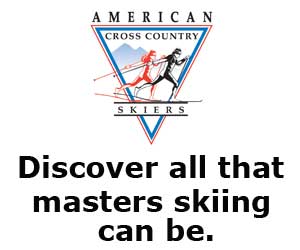
Perserverance - Update from Kuusamo
Thu, Dec 6, 2007 - By Pete Vordenberg
Perseverance is perhaps the major quality a cross country ski racer needs. There really is no separation from one season to the next. The results an athlete is able to get don’t come from a good summer of training let alone a good fall of training. They come from years of good training. And all the while there will be good races and bad races, good times and rough times. And so it takes perseverance.
At the same time even though skiing is an individual sport it cannot be successfully undertaken by a individual. Success requires a team. Often it is the team that helps the individual through the rough times.
Like training the quality organization is not the result of one fall, one summer or one year’s worth of work. The results an organization can achieve are also dependent upon years past. In the case of the US Ski Team we depend on the work of the regions, the clubs, the coaches in all corners of the country. And so again it is a game of perseverance and team, not the US Ski Team but the US ski community in general of which the US Ski Team is a part.
This race season began in late October in Dusseldorf, Germany. We had a small sprint team competing. The individual race didn’t go as well as we expected. Our training over the years and over the summer was better than ever. However the results were not our best. In the sprint relay the guys showed more strength and endurance in the event than they ever had previously. A fall in the race took them out of the running however and again we were left shy of what we were capable of.
ut our spirits were not down. We knew from our testing and our training that we were capable of better and so we simply got back to work.
The next World Cup race was in Beitostolen, Norway. We arrived in Beitostolen about two weeks prior to the race. My idea was to complete a good but not killer week of training in that first week. This was similar to the plan last year but was actually supposed to be an easier transition. Last year the first World Cup had gone OK with a top 20 result. This year we wanted an even stronger opening race.
The transition to Europe can be a tough one with changes in time zone sleep and eating patterns are messed up, with the long travel fatigue and dehydration are common. As it turns out the training we conducted in that first week, while easier than last year, was this time too much. Our best result in Beitostolen was 50th place. Disappointing is an understatement but no one lost their head about it. We knew out fitness was better than ever than our results and so the next step was getting some major rest.
The next stop was Kuusamo, Finland. Here the World Cup team came together for the first time this season. Kikkan Randall was over for her first World Cup of the season after another great summer and fall training with Alaska Pacific University in Anchorage. Chris Cook, Torin Koos and Andy Newell were joined by Kris Freeman and Lars Flora. Lars was last season’s Continental Cup winner and so had gained entry into the World Cup and some financial support from the FIS in the first period of World Cup racing.
For the sprinters we ran two solid workouts the week before the race (intervals and strength) and otherwise rested and skied easy distance. Lars conducted one good distance session and one solid interval session and otherwise took it easy. For Kris there was only rest.
The sprint was our first even and followed a great day of competition by the Nordic Combined team. Johnny Spillane took second place after a great ski leg and Billy Demong also had a top 10 result. Momentum was building for USA Nordic.
Qualification has become a strength of the US Nordic team. This was a major goal starting about 5 years ago – just increasing speed so that we always qualified. Now our goals have shifted from qualification to lasting the rounds, to making it into the finals and hitting the podium more regularly.
The weather was cold and damp with fairly fresh snow. The course was in Kuusamo is fast but also hard. It is fast because the first portion is a fast down hill with some tight corners and quick terrain into a fast flat section. It is hard because the final part is a long steep uphill into a gradual uphill finish.
Kikkan Randall, Andy Newell and Torin Koos qualified high in the field. Chris Cook was not firing on all cylinders and didn’t qualify. Never-the-less Chris has shown that his fitness is good and so it is only a matter of continuing to do the right things, balancing work and rest and keeping at it before his fitness reveals itself with some great results.
Kikkan ended up 16th but she showed that she has improved her classical skiing greatly.
Torin ended up 22nd which was a good result as he, like Kris, had been battling a cold leading into the race.
Andy fought through each heat and came in 4th. While this was a very good result Andy was not satisfied as he felt he was fast enough and fit enough to be on the podium.
The next day Kris Freeman skied his way into 5th place only 7seconds from 2nd place in the 15km classical race. This race was held in very cold and damp conditions on an extremely challenging course. It was a true fitness test, and Kris came through - big time.
Kikkan Randall had one of her best classical race performances of all time in the 10km classic that afternoon. For the women’s race the cold and humidity was accompanied by strong gusts of wind making the weather truly brutal. Kikkan continues to improve year-to-year with the strong work she does training with her APU squad at home and with the USST at camps.
The season has really just begun. This report is only from the our first period, part one of the world cup. Next stop is Davos and then Russia. After Russia the team will return home to prepare for the Canadian World Cups.
There are some great things ahead and also some tough days. The tough days we can count on. The great things we have to work for, rest for, prepare for every day – not just as individuals, not just the USST but as the US Ski Community in general. If we work hard together we will succeed!
